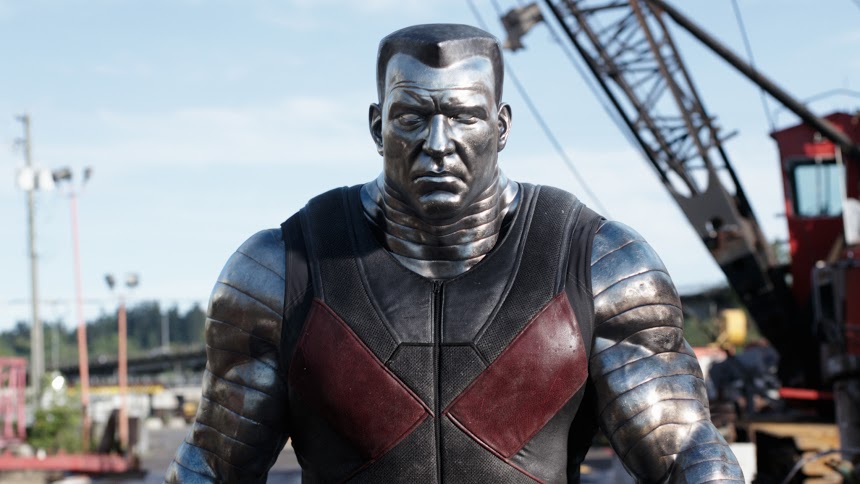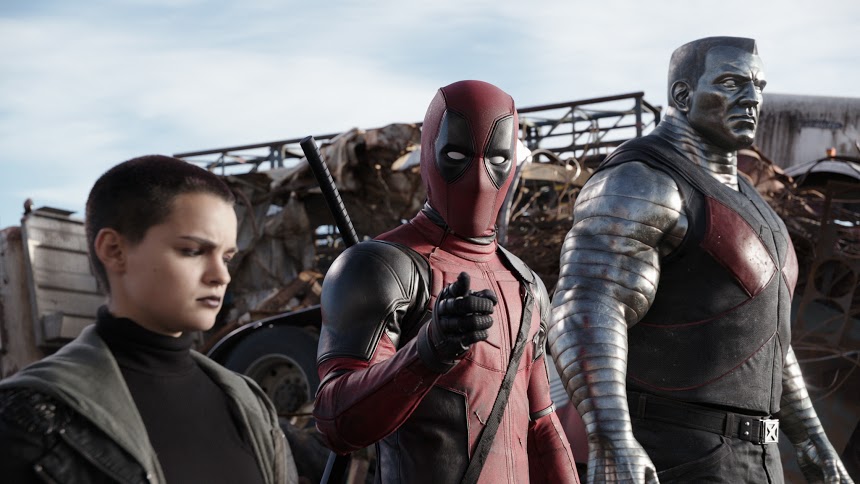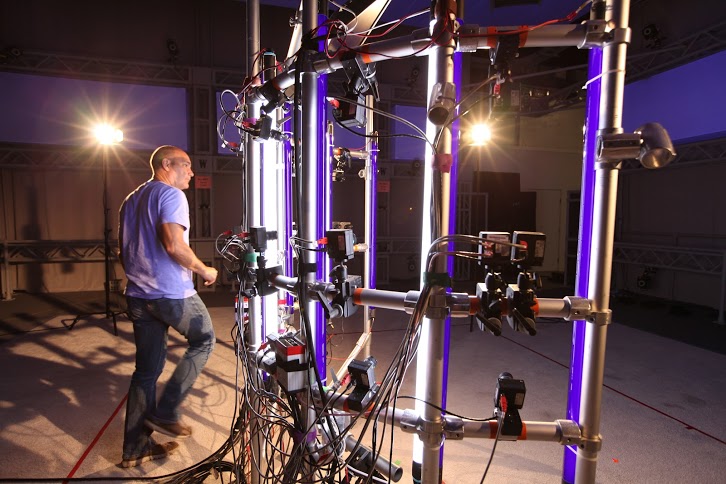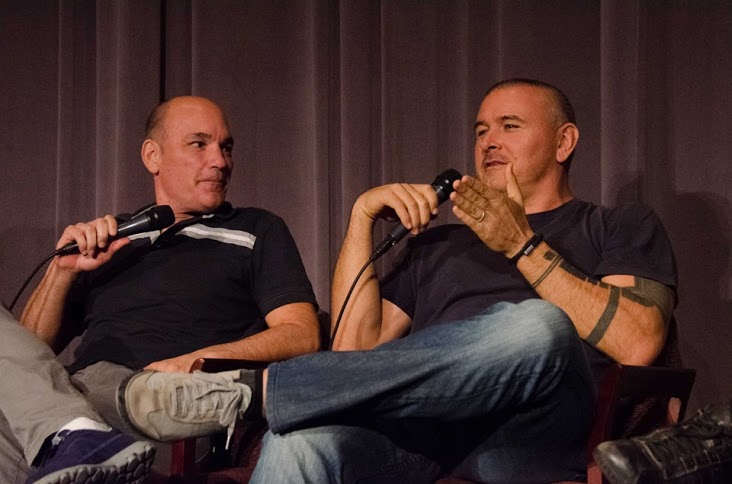Cleverly figuring out the most captivating way to express your intentions and motivations through your emotions and expressions can be a daunting task. But when people are determined to connect with the people they’ve sworn to protect and serve, they can powerfully overcome that and challenge. That’s certainly the case with the cast and crew of the highly anticipated superhero film ‘Deadpool,’ which is based on the Marvel Comics character of the same name. The eighth installment in the ‘X-Men’ film series was directed by Tim Miller and written byRhett Reese and Paul Wernick. The action-adventure movie, which is set to be released in theaters on Friday by 20th Century Fox, will surely impress fans with the help of motion capture artist Greg LasSlle. The facial performer has helped develop technology that grippingly translates expressions onto the screen, which is an important aspect of the sci-fi series.
‘Deadpool’ follows mercenary Wade Wilson (Ryan Reynolds), who protects women from potential threats at New York City’s Sister Margaret’s Home for Wayward Girls. The home serves as a front for a dive bar run by his best friend, Weasel (T.J. Miller), who also moves weapons between his clientele. While at the bar, Wade meets escort Vanessa Carlysle (Morena Baccarin), and the two begin a year-long relationship before he’s unexpectedly diagnosed with multiple organ cancer.
Wade decides to reluctantly leave Vanessa to undergo an experiment that could potentially cure his cancer. But he’s instead injected with a special serum by weapons expert and mutant Francis Freeman, who goes by the alter ego, Ajax (Ed Skrein). The former mercenary is then subjected to days of torture by Angel Dust (Gina Carano), a mutant who’s in alliance with Ajax, and waits for Wade’s new mutation to kick in. Wade’s treatment ultimately does remove his cancer, but as a result, it severely disfigures his face and skin. After escaping from the secret laboratory, Wade is unable to face Vanessa again, as he cannot come to terms with his complexion. So Wade instead moves into the home of an elderly blind woman named Al (Leslie Uggams), who becomes his caretaker and sparring partner. After also being encouraged by Weasel, he becomes a masked vigilante named Deadpool.
As Deadpool then tracks Ajax and demands a cure to his disfigurement, they’re suddenly interrupted by two mutant members of the X-Men team: Peter Rasputin / Colossus (voiced by Stefan Kapicic, and facial and motion captured by LaSalle), who has the ability to transform his entire body into organic steel, and possesses super-strength while in that form, and Ellie Phimister / Negasonic Teenage Warhead (Brianna Hildebrand), a teenager who possesses the power to detonate atomic bursts from her body. As the two mutants try to convince Deadpool to join the X-Men team, they also help him battle Ajax and Angel Dust, and seek revenge on what has happened to him.
LaSalle generously took the time yesterday morning to sit down with us for an exclusive interview interview at New York City’s Park Line Hotel to talk about performing the motion capture for Colossus in ‘Deadpool.’ Among other things, the facial performance artist discussed how he became involved in providing the motion capture for the X-Men mutant in the action-adventure film, as Miller has been using technology that LaSalle helped invent for his movies, and extended the offer for him to help bring the character to the screen. The facial performance artist also revealed that creating and recording Colossus’ expressions was challenging in some respects. But he figured out how to best capture his movements in part by doing research on the character, and also listening to the audio recordings that Kapicic made while reciting Collossus’ lines.
ShockYa (SY): You served as the facial actor for Colossus, a mutant member of the X-Men who has the ability to transform his entire body into organic steel, and possesses super-strength while in that form, in the upcoming comic book film, ‘Deadpool.’ What interested you in being the facial actor for the X-Men member in the movie?
Greg LaSalle (GL): Well, I have been interested in acting for a long time, and it has been a part of what I have been doing for a number of years now. But I have mainly been behind the camera, and not in front of it.
Also, Tim Miller, the director of the film, has been using some technology that some friends and I invented for about 15 years. We developed a new version of it two years ago. When Tim saw the new technology, he decided that it was one of the things he needed to help Colossus come to life.
Tim has also been aware of my little acting career over the past couple of years. So when the actor who played Colossus in the ‘X-Men’ films (Daniel Cudmore, who appeared in ‘X-Men 2,’ ‘X-Men: The Last Stand’ and ‘X-Men: Days of Future Past’) didn’t return to reprise the role in ‘Deadpool,’ I sent Tim a sarcastic email saying, “Let me play Colossus.” About a month later, one of the producers called me and asked if I was serious. I said, “I’m serious if Tim is serious,” thinking it was a joke. But then we met and talked about the part, and that’s how I got it.
SY: Speaking of the action-adventure film’s director, Tim Miller, what was your experience of collaborating with him on creating the emotions and facial expressions of Colossus?
GL: Well, having known Tim for a long time made made the process much easier and more comfortable for me. He has a great sense of humor; he’s a very funny and sarcastic person, which is my favorite kind of sense of humor.
Stefan (Kapicic) provided the voice for Colossus during a lot of takes before I did the motion capture. So I used his audio files during my rehearsals, so that I could get the dialogue down. Then when I worked with Tim, we would look at the shots, and discussed what Colossus was doing in each scene. We talked about why he was saying certain things, and what underlining feeling he had, such as whether he was mad or frustrated.
SY: Was it a challenge to listen to Stefan’s audio and figure out what facial expressions you should use for Colossus?
GL: Yes, it was a challenge to some degree. But I didn’t want to completely figure out Colossus’ facial expresses by just listening to the audio. I also wanted to see what he was actually doing in those scenes, and I didn’t really know that by just listening to the audio files. So I rehearsed for days, just so that I could get the timing down, and not think about what I was doing; I could just do it. It was a different kind of work from preparing for a character in a normal way, but it was just as much work.
SY: With ‘Deadpool’ having been shot around Vancouver, were you able to film your facial capture for Colossus on the film’s sets, or was it filmed entirely in a studio?
GL: No, I actually didn’t go to the set. Tim did this in a very efficient way. He filmed the entire movie last spring, and then he started editing the film together. He had the stand-in for the body part of Colossus on the set so that they could film the physical elements of the character.
But Tim didn’t have all of the lines written, and know exactly what Colossus was going to be doing until the cut the movie together. So we didn’t start filming the motion capture for Colossus until September, and we didn’t finish until Thanksgiving. It was filmed very late in the process. So the only things that we filmed were those elements that made it into the final movie and were worked on by the visual effects companies, in order to save time and money.
SY: With ‘Deadpool’ marking your on-screen debut in the X-Men Cinematic Universe, how did you become familiar with Colossus’ background? What kind of research did you do into the character and his association with the title character-did you read the comic books that he’s featured in?
GL: Well, I worked with Tim on the test that was done about five or six years ago, but Colossus wasn’t in it. So at that point, I didn’t really have any idea who Colossus was. After I talked to Tim, I didn’t really read the comics; the first thing I truly did when I got home was researched the character and his background, including his family situation in Russia and working on the farm. That way I could get a sense of what kind of person he is.
He’s actually pretty interesting, and is a gentle giant. That was more interesting to me than playing this big, hulking guy who goes around punching people. So I mainly researched that side of him-who he is as a real being, and not just what he’s like as a superhero.
SY: Since Colossus is one of the strongest and most physically intimidating mutants in the ‘X-Men,’ universe, how did his physicality influence your facial performance in the film?
GL: It was actually difficult. The way the system functions is that there are 29 cameras that all focus in on a very small area. So you don’t get the opportunity to use your full body, because the movement is restricted. The only thing the cameras are getting are the facial performance. So that’s a problem when you have scenes where you’re getting beat up by someone on screen, or you’re throwing up.
For the vomiting scene, for example, you use your full body; you can’t just do it with your face. So you grab onto a chair and tense everything up, and try not to move your head too much. But you still have to get everything in the facial performance that you need.
SY: With the technology that was used to shoot the motion capture in ‘Deadpool’ what was the easiest and most challenging scenes to film for the sci-fi movie?
GL: Well, the most difficult scene by far was the vomiting scene. I almost got to the point where I was actually going to throw up on the camera and hyperventilate. We were filming scenes over and over again, so we were continuously rolling the cameras. I would get so into the scene that I would get to the point where I almost actually did it.
The easiest parts were really when I was interacting with Tim, and were were playing off of what Ryan may have been saying in the particular scene we were working on. It’s so much easier to play against something that’s fun.
SY: Speaking of Ryan Reynolds, who portrayed the title unconventional anti-hero in the film, what was your collaboration with him and the rest of the cast of ‘Deadpool?’ Did you get to work with them, or did you mainly film your scenes on your own?
GL: For this movie, I filmed my scenes on my own. I originally had the chance to first meet Ryan for ‘The Green Lantern,’ for which I worked behind the camera. We also spoke a little (on Monday) night at the (film’s New York premiere).
SY: Unlike previous ‘X-Men’ films, including ‘X2: X-Men United,’ ‘X-Men: The Last Stand’ and ‘X-Men: Days of Future Past,’ Colossus’ human form isn’t featured in ‘Deadpool.’ Why was the decision made to only show Collossus in his metal form in this movie? How did not featuring his human form influence the way you approached showcasing his emotions and facial expressions?
GL: I actually have to ask Tim, because I’ve been asked this a few times before. I’m pretty sure it’s because the only time we see Colossus is when Wade is Deadpool. So we kept Colossus in chrome because we only see him in the superhero world, and not when we see Wade. So I think it was a conscious decision on Tim’s part to only keep Colossus in chrome.
SY: The film is in part garnering attention for the humor it features, which was a prevalent theme throughout its advertising campaign. Did infusing that humor into the story also influence the way you approached showcasing Colossus’ facial expressions, and the way he interacts with Deadpool and the other characters they interact with?
GL: Well, I think that’s what this character is really about. So I think keeping the humor in really makes the film more fun and exciting.
SY: As a veteran of facial motion capture performance, your work has appeared in over two dozen productions, including ‘Marvel’s The Avengers,’ ‘Guardians of the Galaxy,’ ‘Gravity’ and both ‘Harry Potter and the Deathly Hallows’ films. What interested you in becoming a facial motion capture performer?
GL: Well, when I first moved to California, a friend of mine had a body motion capture system, so I learned how to use it. The system’s cameras also kept getting better. When the companies who make the systems also started making reflective markers to put on people’s bodies, they started making them smaller so that they could also put them on people’s faces. But we thought that wasn’t a very good way to do it.
My friend had a lot of money, so he said, “I’m going to fund the development of a new system,” and we did invent it. It captures the surface of the skin moving, as opposed to little markers. That’s how I became involved in it, and then our first film was ‘The Curious Case of Benjamin Button.’ Since then, I have been working on a lot of big features.
SY: Speaking of working on ‘The Curious Case of Benjamin Button,’ how has facial motion capture changed since you made your feature film debut almost a decade ago?
GL: Well, the biggest change we have seen came with the motion capture technology that we invented, which is called MOVA. It’s high resolution, so it captures such things as the wrinkles and micro-expressions on a person’s face.
But up until two years ago, there hadn’t really been a great way to transfer the performance to the final computer generated character, if it didn’t look like the original actor. So working with (visual effects house) Digital Domain, we use some fancy math to transfer the performance directly. So it creates very little animated intervention.
Tim and I did a presentation two years ago at the Director’s Guild, during which we unveiled that technology. You can really see with this technology that you can do a close-up character on screen, and have the actor’s performance really come through in that character. So I think that has been a big advancement in how you use facial motion capture technology.
SY: Besides being a facial and motion capture artist, are you interested in also pursuing acting?
GL: I do a little bit of both, and I have been able to do short, simple things in front of the camera. I’m working with a director in California, where we’re just writing and filming these little shorts. That’s a lot of fun, because you get to be in front of the camera. So it is a little bit different. The characters in motion capture are a lot of fun, because they’re something that is completely unique. So I like doing both.
SY: If another ‘Deadpol’ and ‘X-Men’ film is made, and Colossus is brought back, would you be interested in providing the facial and motion capture for the character again?
GL: Yes, I would love to do that. I’m hoping that after this weekend, Fox will decide that there should be another ‘Deadpool’ movie.
SY: Besides ‘Deadpool,’ do you have any other projects lined up that you can discuss?
GL: I just finished a film two weeks ago. It’s quite funny, because I was talking to Ryan and Blake Lively (at ‘Deadpool’s New York premiere), and the movie I just worked on was with her. We used invisible effects in the film that Blake and I worked on together. One of the characters I play is her newborn baby. It’s not a special effects-driven movie, but the visual effects team decided that they wanted the baby’s expressions to be performed by an adult. They wanted to show the subtlety of the baby’s first breath, and opening its eyes for the first time. I’m not sure when that’s going to be released, but it’s called ‘All I See Is You.’
SY: How do you hope that facial and motion capture will evolve for upcoming films?
GL: Well, I’d like to see the technology that we have now help get more scripts off the shelves, particularly those that feature characters who require that kind of emotional content. There are a lot of characters who we have seen before that use practical make-up, like Frankenstein. What’s important is to include his human side, especially since he doesn’t talk. So it would be really interesting to have a character like that use this technology, where you can see all of the subtlety that’s going on in the face.




Written by: Karen Benardello
